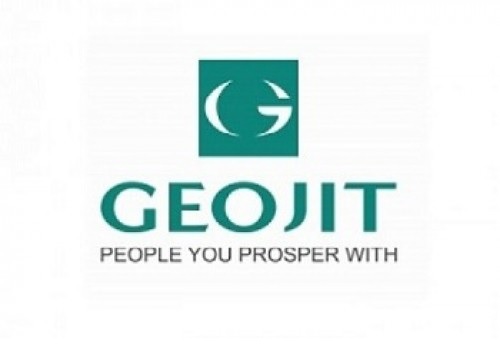Gold trading range for the day is 75660-76820 - Kedia Advisory

Gold
Gold prices fell by 0.36%, settling at Rs.76,144 per 10 grams, as a firmer dollar pressured the metal amidst lingering uncertainty over U.S. Federal Reserve monetary policy. Core PCE prices, the Fed’s preferred inflation gauge, rose by 0.1% in November—the smallest increase since May—raising hopes for disinflation. However, hawkish projections from the FOMC, supported by strong U.S. GDP growth of 3.1% in Q3 and low jobless claims, tempered expectations of rapid rate cuts in 2024. On the global front, central banks continued to accumulate gold, with 60 tons of net purchases recorded in October, led by the Reserve Bank of India (RBI), which added 27 tons, pushing its year-to-date purchases to 77 tons—a five-fold increase from 2023. Global gold demand excluding OTC trading remained stable in Q3 at 1,176.5 metric tons, as increased investment activity balanced weaker jewelry consumption. OTC flows rose significantly, contributing to record Q3 gold demand of 1,313 tons. In India, demand remained subdued amid high gold prices, with discounts offered at $8 per ounce over domestic prices. Indian gold imports are expected to slow significantly in December, and consumers have shifted towards lightweight and lower-carat jewelry. Gold experienced long liquidation, with open interest decreasing by 0.37% to 12,775 contracts while prices declined Rs.276. Immediate support is at Rs.75,900, and a breach may lead to testing Rs.75,660. Resistance is pegged at Rs.76,480, with a potential move to Rs.76,820 if breached.
Trading Ideas:
* Gold trading range for the day is 75660-76820.
* Gold prices eased on a firmer dollar, as investors sought further clues on Fed’s monetary policy
* Core PCE prices, rose by 0.1% from the previous month in November, below expectations.
* Gold demand in India remained subdued as volatile prices prompted potential buyers to delay purchases
Silver
Silver prices rose by 0.82%, settling at Rs.89,118 per kg, driven by supportive inflation data that strengthened prospects for Federal Reserve rate cuts in 2024. Core PCE inflation, the Fed's preferred measure, showed its smallest increase in six months, raising hopes for monetary easing despite hawkish signals in the latest FOMC projections. Global silver dynamics revealed a continued structural deficit, projected to decline slightly to 182 million ounces in 2024. Total demand is forecasted to reach 1.21 billion ounces, fueled by record industrial use and recovering jewelry consumption, while physical investment is expected to fall by 16%. On the supply side, mine output is set to increase by 1%, supported by higher production in Mexico, Chile, and the U.S., and recycling is anticipated to rise by 5% amid elevated silverware scrap. India's silver imports surged in the first half of 2024 to 4,554 tons, compared to just 560 tons a year earlier, reflecting robust demand from solar and electronics industries and as investors favor silver over gold. This marks a significant recovery from depleted inventories in 2023, bolstering expectations of continued import strength. Silver witnessed short covering, with open interest dropping by 3.66% to 33,285 contracts, while prices gained Rs.726. Immediate support is seen at Rs.88,635, with a break potentially leading to Rs.88,160. Resistance is at Rs.89,520, with the next target at Rs.89,930 if breached.
Trading Ideas:
* Silver trading range for the day is 88160-89930.
* Silver gained as the latest inflation data favored the resumption of rate cuts by the Federal Reserve.
* Core PCE prices, rose the least in six months in the November print.
* Concerns of tariffs and expansive fiscal policy by the incoming Trump administration also backed hawkish projections for the Fed.
Crude oil
Crude oil prices fell by 0.62%, settling at Rs.5,901 per barrel amid ongoing concerns about China’s demand outlook. Sinopec's energy outlook indicated that China's crude imports could peak by 2025, with total oil consumption expected to reach its zenith by 2027 due to declining gasoline and diesel demand. Weighing further on prices, OPEC+ recently reduced its 2024 global oil demand growth forecast for the fifth consecutive month. JPMorgan anticipates a surplus of 1.2 million barrels per day in 2025, driven by a 1.8 million bpd increase in non-OPEC+ supply, while OPEC output remains steady. In the U.S., crude oil inventories fell by 934,000 barrels last week, less than the anticipated 1.7 million barrel draw and far below the 4.7 million barrel industry-reported decline. Meanwhile, gasoline stocks rose by 2.348 million barrels, aligning with expectations of a 2 million barrel increase, while distillate stocks dropped sharply by 3.18 million barrels. Global demand forecasts from the EIA were also revised downward, with 2024 demand growth now expected at 1.2 million bpd, totaling 104.3 million bpd, a reduction of 300,000 bpd from prior estimates. U.S. oil production for 2024 and 2025 is expected to grow more modestly than previously projected, reflecting a tempered outlook. Crude oil saw fresh selling, with open interest increasing by 2.7% to 7,996 contracts as prices declined Rs.37. Immediate support lies at Rs.5,850, with further downside potentially testing Rs.5,798. Resistance is at Rs.5,965, with a breach paving the way for Rs.6,028.
Trading Ideas:
* Crudeoil trading range for the day is 5798-6028.
* Crude oil dropped due to persisting concerns about the outlook for oil demand from China
* Sinopec sees China's crude imports possibly peaking in 2025
* Trump wants EU to buy more US oil, gas or face tariffs
Natural gas
Natural gas prices dropped by 2.56%, settling at Rs.312 per MMBtu, as profit booking ensued after recent gains. Earlier, prices had risen on expectations of robust global LNG demand and higher domestic consumption. Forecasts of a cold front in mid-January lifted demand projections by 18 billion cubic feet over the weekend. Meanwhile, U.S. natural gas inventories recorded another significant draw of 125 billion cubic feet last week, reducing total stockpiles to 3,622 bcf. Despite the withdrawal, inventories remain 6% above the five-year average for this period. Global dynamics continue to influence the market, with declining Russian gas exports to Europe driving demand for U.S. LNG. The Biden administration’s increased focus on LNG exports is expected to further tighten domestic supply as exporters prioritize higher international margins. In December, average U.S. gas output increased to 103.1 bcfd from 101.5 bcfd in November but remained below the record of 105.3 bcfd set in December 2023. Projections indicate that cooler weather next week could raise average gas demand, including exports, to 130.2 bcfd before falling to 119.4 bcfd as milder weather returns. The natural gas market witnessed long liquidation, with open interest declining by 25.96% to 10,856 contracts. Prices fell by Rs.8.2, with immediate support at Rs.299.8, and further downside could test Rs.287.7. Resistance is pegged at ?329, and a breakout above this level may lead to prices testing Rs.346.1 in the near term.
Trading Ideas:
* Naturalgas trading range for the day is 287.7-346.1.
* Natural gas dropped on profit booking after prices rose amid bets of stronger global LNG demand.
* Fresh forecasts of a cold front in the US halfway through January drove the industry to raise demand forecasts by 18 billion cubic feet.
* Meteorologists projected weather in the Lower 48 would remain mostly warmer than normal through at least Jan. 4.
Copper
Copper prices edged down by 0.42%, settling at Rs.798.65 per kg as the global refined copper market showed a surplus of 287,000 metric tons for the first 10 months of 2024. Meanwhile, Peru's copper production in October declined by 1.4% year-on-year to 236,797 metric tons due to reduced output from major mines. China's refined copper production fell by 1.6% in November to 1.13 million tons, while copper inventories in Shanghai Futures Exchange warehouses hit their lowest levels since February. China's November copper imports rose to 528,000 tons, a one-year high, driven by shipments from Africa and inventory restocking amid declining domestic copper stocks. The International Copper Study Group (ICSG) reported a global deficit of 41,000 metric tons in October, narrowing from 136,000 metric tons in September. Adjusting for changes in Chinese bonded warehouse inventories, the deficit was 43,000 metric tons in October, compared to 156,000 metric tons in September. On the supply side, BNP Paribas forecasts a global surplus of 491,000 metric tons in 2025, with an average copper price projection of $9,020. Chile, the largest copper producer, is expected to maintain production levels between 5.4 and 5.6 million tons in 2025. The copper market saw fresh selling with open interest rising by 31.24% to 8,264 contracts. Prices declined by Rs.3.35, with immediate support at Rs.795.7 and a further test at Rs.792.6 likely if bearish momentum persists. Resistance is seen at Rs.804.2, and a breakout above this level could drive prices toward Rs.809.6.
Trading Ideas:
* Copper trading range for the day is 792.6-809.6.
* Copper dropped as the global refined copper market was in a 287,000 metric ton surplus for the first 10 months of 2024.
* Copper inventories in warehouses monitored by the Shanghai Futures Exchange fell this week and are currently at the lowest since February.
* Peru said it expects its 2025 copper production to remain flat for the third straight year.
Zinc
Zinc prices edged up by 0.05% to settle at Rs.278.8 per kg, supported by a 20.8% decline in Shanghai Futures Exchange inventories from the previous week. However, market sentiment remained cautious due to weaker-than-expected retail sales growth and a 17-month streak of declining new home prices in China, reflecting ongoing challenges in the property sector. Beijing’s recent stimulus announcements have yet to generate significant investor optimism, given the lack of clarity on the size and scope of measures. China's refined zinc production in November increased marginally by over 1,000 metric tons, up 0.3% month-on-month but down nearly 12% year-on-year. For the first 11 months of 2024, domestic production totaled over 5.6 million metric tons, a 6% year-on-year decline. December's production is expected to rise significantly, with a month-on-month increase of over 20,000 metric tons (5%), driven by recovery in regions like Inner Mongolia, Qinghai, and Shaanxi. The International Lead and Zinc Study Group (ILZSG) reported a global deficit of 69,100 metric tons in October, up from 47,000 metric tons in September, as refined metal production fell 1.7% year-on-year amid limited zinc concentrate availability. Zinc witnessed fresh buying, with open interest rising by 50.43% to 2,640 contracts. Prices gained Rs.0.15, with support at Rs.277.2 and a further test at Rs.275.4 likely if bearish momentum develops. Resistance is pegged at Rs.281.7, and a breakout above this level could push prices toward Rs.284.4.
Trading Ideas:
* Zinc trading range for the day is 275.4-284.4.
* Zinc gains as inventories in SHFE warehouses fell 20.80% from last Friday
* In China, new home prices fell for the 17th consecutive month, highlighting ongoing challenges in the property sector.
* Beijing's latest stimulus pledges have failed to generate significant investor optimism
Aluminium
Aluminium prices rose by 0.42% to settle at Rs.240.1 per kg, supported by a global refined aluminium supply shortage of 40,300 tons in October. From January to October 2024, global production reached 59.65 million tons, while consumption totaled 59.98 million tons, resulting in a cumulative deficit of 332,600 tons. In China, aluminium production increased by 3.6% year-on-year in November, driven by capacity expansions and hydropower availability in Yunnan. Cumulative production for the first 11 months rose by 4.6% year-on-year to 40.22 million tons. However, high pot ages and environmental controls have led to production cuts and maintenance in certain smelters. Chinese exports of unwrought aluminium and aluminium products surged by 17% year-on-year to nearly 5.5 million tons in the first ten months, with October alone seeing a 31% year-on-year increase to 577,000 tons. Meanwhile, Japanese buyers agreed to a 30% higher premium of $228 per ton for January-March shipments amid concerns about supply tightness in Asia. Globally, primary aluminium output in November rose by 3% year-on-year to 6.04 million tons, reflecting steady production despite cost pressures and production challenges. Aluminium witnessed fresh buying, with open interest increasing by 9.28% to 3,132 contracts as prices rose Rs.1. Support is seen at Rs.238.8, and a breach could lead to testing Rs.237.4 levels. Resistance is pegged at Rs.241.6, and a breakout above this level could push prices toward Rs.243.
Trading Ideas:
* Aluminium trading range for the day is 237.4-243.
* Aluminium gains as Global refined aluminum market in short supply of 40,300 tons in Oct
* Global primary aluminium output in November rose 3% year on year to 6.04 million tonnes - IAI
* The latest data showed that the output of primary aluminum in China rose by 3.6% from the previous year in November.
Cottoncandy
Cottoncandy prices rose by 0.83% to settle at Rs.54,380 per candy, supported by short covering after previous declines. Global cotton production for the 2024-25 season is projected to increase by over 1.2 million bales, reaching 117.4 million bales, driven by higher outputs in India and Argentina. Cotton yarn prices in South India showed strength due to increasing demand from garment industries and strong export orders. However, North Indian states like Punjab, Haryana, and Rajasthan saw a 43% decline in kapas arrivals till November 30, compared to the same period last year, causing supply concerns across the chain. The Cotton Association of India (CAI) has maintained cotton consumption estimates at 313 lakh bales for the 2024-25 season, with pressing estimates stable at 302.25 lakh bales. Cotton imports are projected to rise significantly to 25 lakh bales compared to 15.20 lakh bales last year. By November 30, approximately 9 lakh bales had already arrived at Indian ports. The closing stock for September 2025 is expected to drop to 26.44 lakh bales from 30.19 lakh bales in the previous year. Globally, world cotton consumption and ending stocks have been revised higher, while beginning stocks were reduced. The market exhibited fresh buying as open interest rose 0.29% to 346 contracts while prices gained Rs.450. Cottoncandy finds support at Rs.54,270, with further tests possible at Rs.54,150. Resistance is anticipated at Rs.54,480, and a breakout above could see prices testing Rs.54,570.
Trading Ideas:
* Cottoncandy trading range for the day is 54150-54570.
* Cotton gains on short covering after prices dropped as Global cotton production is projected to rise
* India's cotton production in 2024/25 is likely to fall by 7.4% from a year ago
* Cotton production is projected to increase in China, Brazil, and Argentina, more than offsetting reductions in the US and Spain – USDA
* In Rajkot, a major spot market, the price ended at 25540.95 Rupees dropped by -0.04 percent.
Turmeric
Turmeric prices settled marginally higher by 0.03% at Rs.13,992 due to robust buying amidst reports of limited supplies until the arrival of the new crop. Market arrivals increased to 9,030 bags compared to 7,965 bags in the prior session, with significant activity in Hingoli and Erode, though Hingoli markets remained closed. While low stock levels are supporting prices in the short term, the crop condition is reported to be excellent, and higher acreage in key growing regions like Maharashtra, Telangana, and Andhra Pradesh suggests potential for improved production. Estimates indicate an increase in turmeric sowing to 3.75-4 lakh hectares this year, up from 3-3.25 lakh hectares last year. India's turmeric exports during April-October 2024 rose by 6.57% to 108,879.96 tonnes, with a notable 57.22% year-on-year jump in October exports. However, imports also surged by 118.99% during the same period, reaching 17,692.28 tonnes. While October imports decreased by 23.53% year-on-year, they recorded a month-on-month rise of 16.90%, reflecting mixed market trends. From a technical perspective, turmeric remains in a short-covering phase, evidenced by a 1.19% decline in open interest to 11,235. Prices found support at Rs.13,874, with further downside testing likely at Rs.13,758. Resistance is expected at Rs.14,092, and a breakout above this level could see prices testing Rs.14,194.
Trading Ideas:
* Turmeric trading range for the day is 13758-14194.
* Turmeric settled flat amid reports of low supplies till the arrival of new crop.
* However upside seen limited as turmeric crop is reported to be in good to excellent condition.
* In Indonesia, dry weather has accelerated harvesting, which is currently at peak levels.
* In Nizamabad, a major spot market, the price ended at 13698.85 Rupees gained by 0.32 percent.
Jeera
Jeera prices declined marginally by -0.15% to Rs.23,935 due to profit booking after recent gains driven by delayed sowing in Gujarat and Rajasthan, key producing states. Higher temperatures have hampered seeding and germination, resulting in sowing in Gujarat covering only 57,915 hectares as of November 25, compared to 2.44 lakh hectares last year. This represents just 15% of the normal cropping area of 3.81 lakh hectares, delaying sowing by 20-25 days. Similarly, Rajasthan’s cumin cultivation is expected to decrease by 10-15%.India’s cumin production reached 8.6 lakh tonnes from 11.87 lakh hectares in 2023-24, up from 5.77 lakh tonnes and 9.37 lakh hectares the previous year. However, the current season could see a production decline of around 10%. International demand remains robust, with Indian cumin prices at $3,050 per tonne, significantly cheaper than Chinese cumin by $200-250 per tonne. Tensions in the Middle East have boosted export demand, and festive buying in Europe and other regions has further strengthened exports. During April-October 2024, cumin exports surged by 77.37% to 135,450.64 tonnes compared to 76,367.90 tonnes last year. October exports rose by 161.04% year-on-year to 16,257.44 tonnes. Technically, the market is under fresh selling as open interest increased by 1.52% to 2,598 while prices fell Rs.35. Jeera has immediate support at Rs.23,670, with further downside likely testing Rs.23,390. Resistance is seen at Rs.24,220, and a breakout above could push prices to Rs.24,490.
Trading Ideas:
* Jeera trading range for the day is 23390-24490.
* Jeera dropped on profit booking after prices gained as sowing has been delayed
* Higher day temperatures in the past few weeks has impacted the seeding of jeera and has also led to poor germination in various places.
* In Gujarat, jeera sowing has taken place in only 57,915 hectares till November 25 during the rabi 2024-25 cropping season.
* In Unjha, a major spot market, the price ended at 24381.45 Rupees dropped by -0.27 percent.
Views express by all participants are for information & academic purpose only. Kindly read disclaimer before referring below views


















